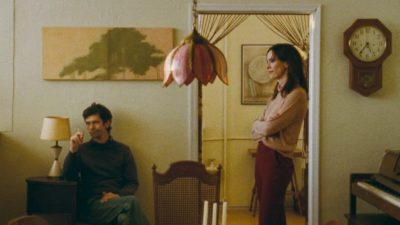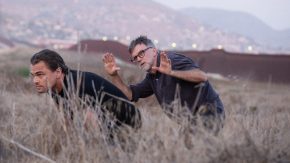If you still haven’t seen the Dalí–Freud exhibition in the Viennese Belvedere: you still have time until 29 May! Surrealism and psychoanalysis: they have turned the world upside down a while ago, and now we can’t even imagine the world without them. The exhibition not only shows us connections between the two movements, but also the exciting and ambivalent personal relationship of their two important figures. Freud was suspicious about Dalí who, on the other hand, obsessively sought for the possibility of a meeting for many years. How, where, when did they finally meet and what happened between them? I asked curator Jaime Brihuega, art historian, university lecturer and author, about this and many more.
Where did the idea for this exhibition come from?
The idea of this exhibition has always been in the air. It constitutes a chapter in the history of contemporary art which is charged with a great suggestive force. It invites viewers of Salvador Dalí’s works, the readers of his writings, and art historians for a journey through the darkest corners of consciousness. A trip in which Dalí manages to awaken many of the ghosts that psychoanalysis intended to persecute.
How do Dalí’s art and Freud’s psychoanalysis connect to each other?
Dalí had read Freud in the mid-twenties and found in his texts a key capable of revealing a good part of his obsessions, frustrations and hidden desires. The fact of confronting them through his work and his own “performative condition” would become the central and obsessive axis of his biography. On the other hand, Dalí’s interest in the interpellation of the unconscious was superimposed on the attraction that, both for him and for García Lorca, emanated from the drawings of the nervous tissues that the biologist Santiago Ramón y Cajal had been publishing for decades. Thus, psychology and physiology intertwined, providing powerful instruments for the construction of their visual language. All these elements make this exhibition a fascinating and at the same time disturbing experience.
Almost ten years ago, the project began to materialise. The original plan was to have it in 2018, considering the eightieth anniversary of the meeting between Dalí and Freud in Vienna in 1938. After some initial issues, the Belvedere welcomed the project with real enthusiasm. Then the pandemic would delay its inauguration for a year but, finally, in January the exhibition opened its doors. I thought it was a good time to establish the nature of these relationships, both in the way that Dalí argued with Freud to legitimise his own obsessions, and in the attitude that Freud maintained towards surrealism and to what extent the encounter with Dalí was able to modify it.
How did it all evolve from an idea to the implementation?
The development process of this exhibition has forced me to a thorough immersion in Dalí’s images, whose meanings have been revealed increasingly complex and provided with intense allusions to the mental landscapes that Freud had covered in his texts. All this has unfolded a so-called “mental cartography” that the works that make up this exhibition show with renewed eloquence. In addition, this exhibition deals with two practically unpublished aspects, such as the presence of histological forms in Dalí’s work from the mid-twenties and the extravagant and at the same time surprising relationship between his work El hombre invisible (a sketch exhibited here) with a painting by the Spanish folklorist painter Julio Romero de Torres, who is apparently more like an antipode of Dalí.
Obtaining Dalí’s work for an exhibition is increasingly difficult, and especially in this case, since it could only be works produced between 1923 and 1938, which are always the most requested. This exhibition brings together around 130 pieces including oil paintings, sculptures, drawings, documents, objects and footage. Each of them sheds light on the obsessive relationship that Dalí had with the figure of Freud, from his discovery in the mid-1920s to the meeting that finally took place in London in 1938. In addition to a good number of works from private collections, we have borrowed artworks from a number of Spanish, French, German, American and British museums. Some works that are exhibited here are from the Freud Museums Vienna and London.
How is the exhibition structured?
The exhibition is divided into five sections. The first one is ‘Secret Life, Figueres, Cadaqués and the family environment’ which is about Dalí’s early life. Section 2 is ‘Reading Freud. Dalí in the student residence in Madrid and in Catalonia’. It was between 1923 and 1927, as a result of his years spent in the Residencia de Estudiantes in Madrid, when Dalí read Freud intensely. Also when, together with García Lorca and Buñuel, he became aware of the surrealist movement and its plastic manifestations, especially through the magazines received from France.
This leads to ‘Section 3: In the Course of Surrealism’. This deals with the final moment of Dalí’s residence in Catalonia and the first years in Paris, when he joined the surrealist group, and his relationship with André Breton. It is also the time of the two surrealist films that he made with Luis Buñuel. Section 4 shows us ‘The Deployment of the Paranoid-Critical Method’, which was Dalí’s main contribution to Surrealism. The paintings shown in this section are the most eloquent in the exhibition. They also evoke Dalí’s trips to Vienna, and his interest in Vermeer’s works, then in Count Czernin’s collection and today in the Kunsthistorisches Museum.
Finally, section 5 is ‘London 1938: The Dalí-Freud-James-Zweig Meeting’. After some unsuccessful attempts during his visits to Vienna, in 1938 Dalí (through Edward James and Stefan Zweig) met Freud in London, where he lived in exile and ill. Dalí showed Freud Métamorphose de Narcisse, a painting for which two preparatory drawings are shown. Artworks, photographs, books and letters bring back the specific atmosphere of this extraordinary meeting.

























Comments